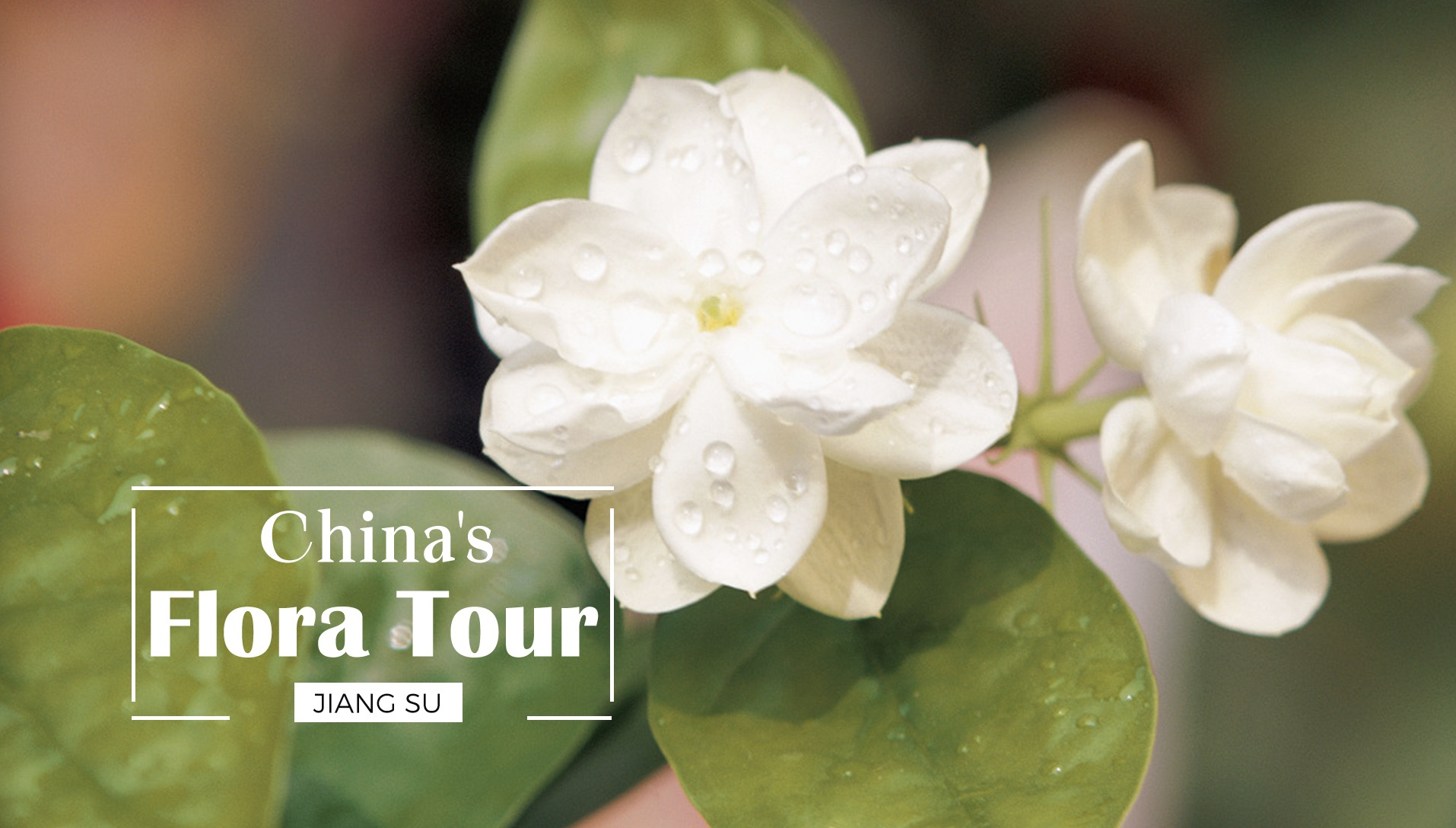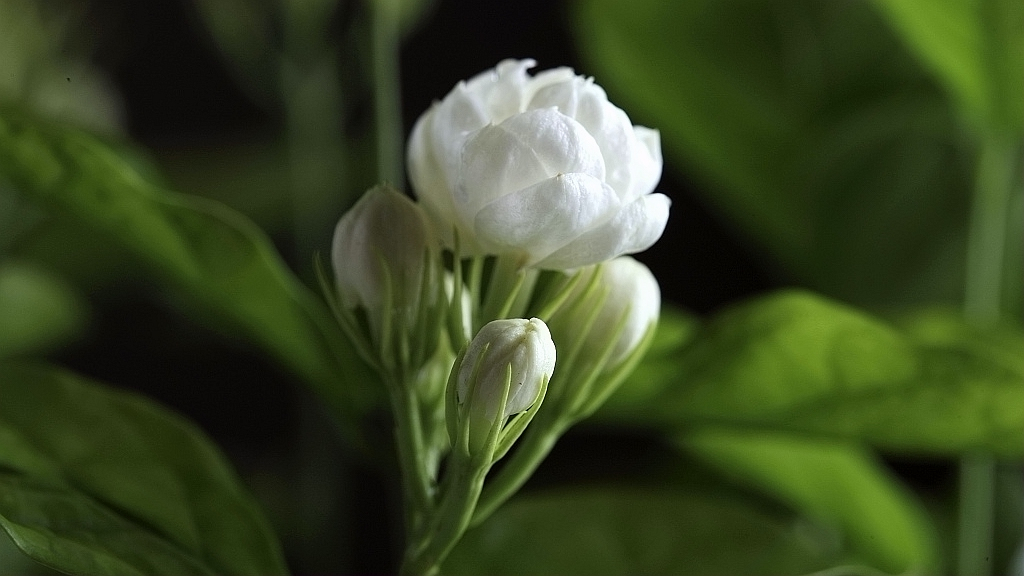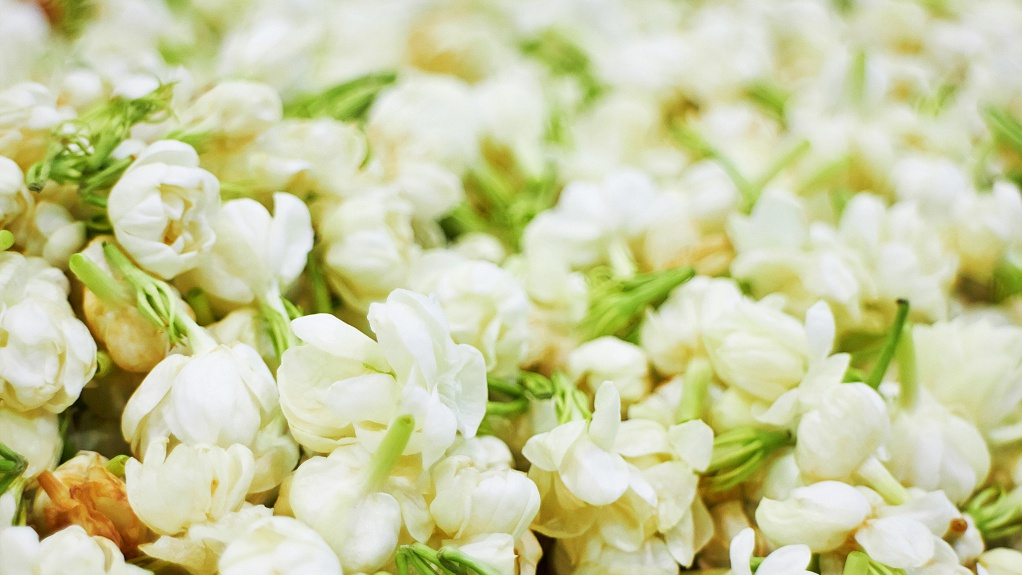
Plant
16:10, 04-Jun-2019
China's Flora Tour: How did the Jasmine flower become the symbol of Jiangsu Province?
Updated
16:37, 04-Jun-2019
By Zhao Ying

Giacomo Puccini's famous opera "Turandot" made a Chinese folk melody named "Mo Li Hua" (Jasmine flower) known to the world. The holy white flower is in concert with the Chinese princess Turandot's beauty and pride. The song also becomes Jiangsu Province's most renowned and representative folk song.

Clusters of the Jasmine flower. /VCG Photo
Clusters of the Jasmine flower. /VCG Photo
Back in the early 19th century, the tune was first notated by British geographer John Barrow during his travels in China. The original Jasmine flower song was composed during the Qing Dynasty (AD 1616-1912) and had many regional variations in China. The euphonic melody used in the local Chinese opera was quickly spread by folk artisans as the communication between north and south became more frequent through the Beijing-Hangzhou Grand Canal at that time.
Although it was unclear where the song originated, all versions embodied the pure love of young couples. The commonly known Jasmine flower song was revised by composer He Fang in 1942 when he collected folk songs in Jiangsu Province. The song soon became a hit after it was introduced to Beijing and was recommended in musical textbooks of the Asia-Pacific region by UNESCO in 1982.

Jasmine flowers. /VCG Photo
Jasmine flowers. /VCG Photo
The folk song was so well-known that the Jasmine flower became the provincial flower of Jiangsu in 2007. However, the Jasmine flower was now mostly planted in Hengxian County in south China's Guangxi Zhuang Autonomous Region. Native to Bhutan in the eastern Himalayas, the flower was cultivated in southwest China's Sichuan Province since the Song Dynasty (AD 960-1279).

Jasmine flowers. /VCG Photo
Jasmine flowers. /VCG Photo
People love the plant for its beguiling sweet fragrance. It opens at night and closes in the morning, but blooms all throughout the year. The flower can be used as an ingredient in perfumes and tea. The commercialized production of the flower started in the mid-19th century in east China's Fujian Province. In the 20th century, Jasmine tea became very popular in China as it was said to help people relax.
China's Flora Tour
From the wetlands along the east coast to the dense rainforests hidden in the west, China boasts an array of plant species. In this series, we will go on a tour to learn about some of the most representative florae in different provinces and see how they live in harmony with local geography and climate.
(Cover image via VCG.)
(If you want to contribute and have specific expertise, please contact us at nature@cgtn.com.)

SITEMAP
Copyright © 2018 CGTN. Beijing ICP prepared NO.16065310-3
Copyright © 2018 CGTN. Beijing ICP prepared NO.16065310-3